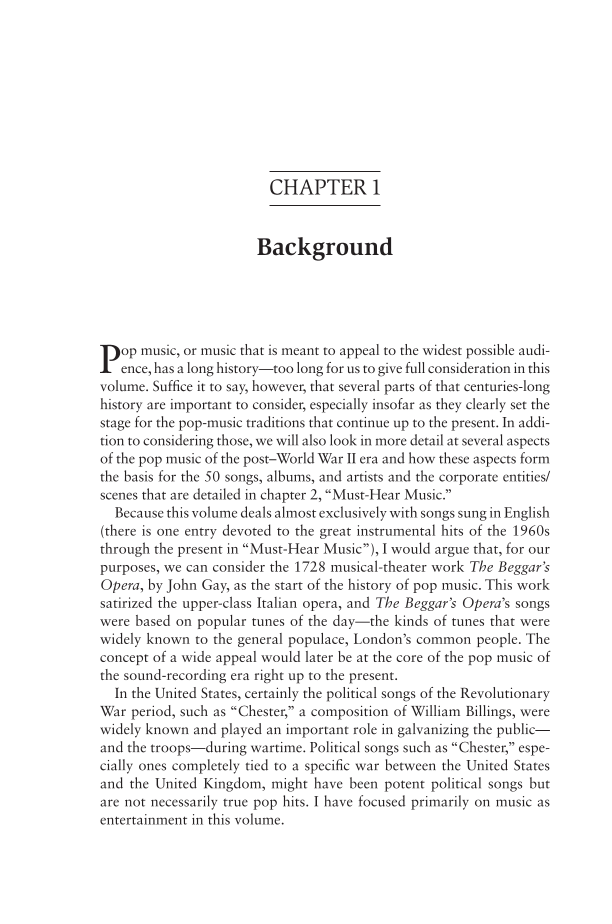CHAPTER 1 Background Pence, op music, or music that is meant to appeal to the widest possible audi- has a long history—too long for us to give full consideration in this volume. Suffice it to say, however, that several parts of that centuries-long history are important to consider, especially insofar as they clearly set the stage for the pop-music traditions that continue up to the present. In addi- tion to considering those, we will also look in more detail at several aspects of the pop music of the post–World War II era and how these aspects form the basis for the 50 songs, albums, and artists and the corporate entities/ scenes that are detailed in chapter 2, “Must-Hear Music.” Because this volume deals almost exclusively with songs sung in English (there is one entry devoted to the great instrumental hits of the 1960s through the present in “Must-Hear Music”), I would argue that, for our purposes, we can consider the 1728 musical-theater work The Beggar’s Opera, by John Gay, as the start of the history of pop music. This work satirized the upper-class Italian opera, and The Beggar’s Opera’s songs were based on popular tunes of the day—the kinds of tunes that were widely known to the general populace, London’s common people. The concept of a wide appeal would later be at the core of the pop music of the sound-recording era right up to the present. In the United States, certainly the political songs of the Revolutionary War period, such as “Chester,” a composition of William Billings, were widely known and played an important role in galvanizing the public— and the troops—during wartime. Political songs such as “Chester,” espe- cially ones completely tied to a specific war between the United States and the United Kingdom, might have been potent political songs but are not necessarily true pop hits. I have focused primarily on music as entertainment in this volume.
Document Details My Account Print multiple pages
Print
You have printed 0 times in the last 24 hours.
Your print count will reset on at .
You may print 0 more time(s) before then.
You may print a maximum of 0 pages at a time.










































































































































































































































































